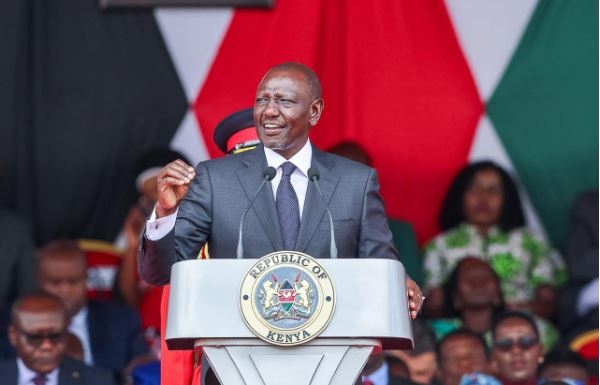Experts in the transport sector have said the country is ready to transition to electric vehicles to curb greenhouse gas emissions.
They made the calls on Wednesday during the launch of Kenya’s road map to e-mobility in Nairobi.
The event was attended by Environment CAS Mohammed Elmi, Transport PS Joseph Njoroge, German Embassy Deputy Ambassador Thomas Wimmer, Delegate of German Industry and Commerce for Eastern Africa Maren Diale-Schellschmidt and Ministry of Energy Secretary of Renewable Energy Isaac Kiva.
PS Njoroge said the government welcomes any move aimed at curbing greenhouse gases.
He said the country has enacted two laws that would help the transition.
These are the Climate Change Act of 2016 and the Energy Act, 2019.
Initially, the laws were to guide the country towards the reduction of greenhouse gas emissions.
However, with the realisation that the transport sector accounts for at least 13 per cent of its total emissions, the transition towards e-mobility is now a priority.
Kenya seeks to reduce emissions by 32 per cent by 2030.
Agriculture, energy, manufacturing, transport, waste and forestry are some of the sectors the government intends to use to curb emissions.
The country needs $62 billion (Sh6.710 trillion) to mitigate and adapt to the impact of climate change between 2020 and 2030.
Njoroge said fiscal incentives and the development of Bus Rapid Transit are all aimed at curbing greenhouse gas emissions.
"For instance in the Finance Act 2019, the government as part of its objective to improve tax incentives and existing policy framework reduced exercise duty for 100 per cent electric vehicles from 20 per cent to 10 per cent," he said.
Njoroge said commuter rail has been rehabilitated to move more people as opposed to low capacity vehicles that cause a lot of emissions.
He said the country at the moment does not have the appropriate infrastructure to support e-mobility.
Njoroge said there are 582 electric and another 582 solar-powered vehicles in the country.
Passenger electric vehicles registered in Kenya remain low and are estimated to be less than 400 units compared to 3.2 million internal combustion units in 2018.
The number of vehicles including vehicles registered per year increased by 38 per cent from 213,715 in 2016 to 346,729 in 2020.
Wimmer said Kenya must seize the moment and adopt e-mobility.
Kenya’s greenhouse gas emissions are set to increase by 53 per cent, from the 2015 levels of 93.7 MtCO2e to 143 MtCO2e by 2030.
The transport sector is also set to increase its greenhouse gas emissions by 52 per cent from the 2015 levels of 16.9 MtCO2e to 25.7 MtCO2e by 2030.
The 2030 projections showed that fossil fuels will be a leading contributor to emissions due to the increased demand from various sectors, including the transport sector.
The road, rail, and aviation subsectors were responsible for 12.09 MtCO2e (98%), 0.062 MtCO2e (2%), and 0.188 MtCO2e (1%), respectively in the year 2019.
A transition to e-mobility will effectively reduce greenhouse emissions attributed to the mobility sector as grid-based electricity in Kenya is mainly generated from renewable energy sources.















